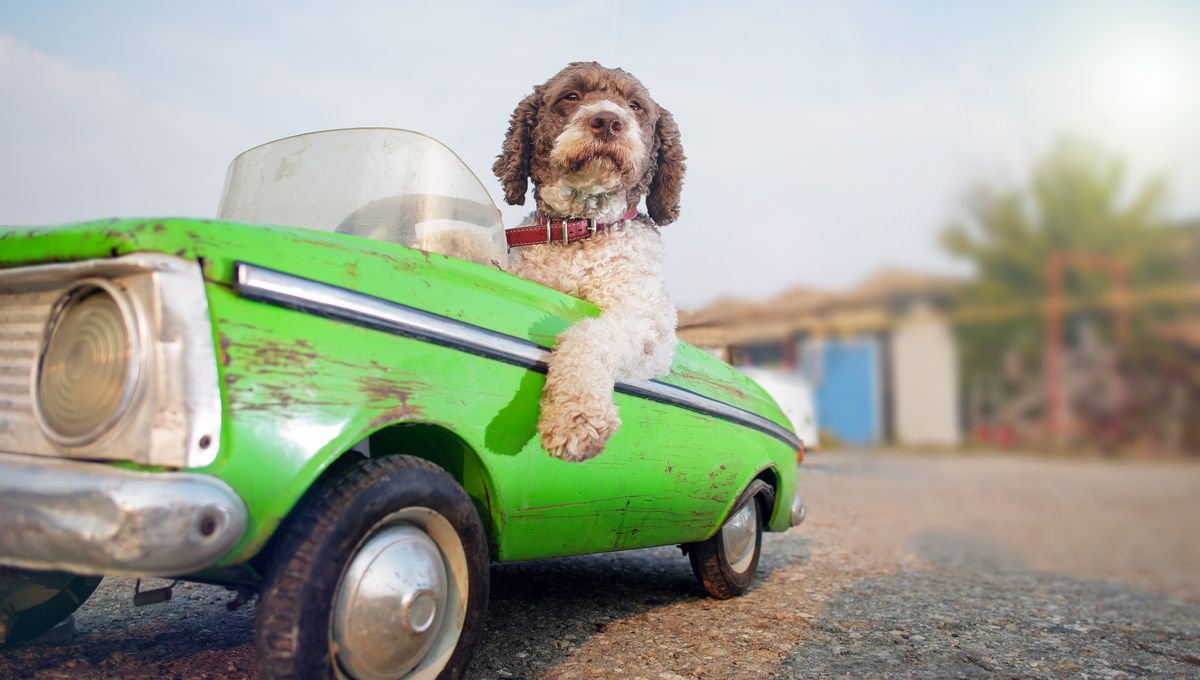
Are you a good driver? Big deal, turns out half the animal kingdom are too. Here are some of the times humans taught animals to drive vehicles for… science reasons.
Driving tiny cars helps relax rats
In a bid to establish the effects of an enriching environment, researchers from the University of Richmond in Virginia made an interesting discovery in 2019 when they taught 11 rats to operate tiny vehicles.
The rodent-operated vehicles (ROV) consisted of a plastic jar atop electric-powered wheels which the rats controlled by pressing on a copper bar.
Of the group of 11 rodents, six were housed in standard laboratory cages with little enrichment, while the remaining five lived in a toy-filled “enriched environment”. The effects of these environmental differences were then tested by examining the rats’ driving ability and enthusiasm for learning a new skill.
As hypothesized, the rats housed in an enriched environment showed a strong interest in learning how to drive, and their interest persisted even after the food reward was removed. Their keen motoring interest also made them better drivers, showing them to be more competent at learning a new skill than the non-enriched group.
Despite the non-enriched group showing little interest in the task, when stool samples were tested the team found both groups had an increase in the hormone dehydroepiandrosterone, a stress controller, and a decrease in corticosterone, a stress marker.
These findings suggest that all the animals in the study, regardless of how enriching their living conditions were, found mastering the skill of cruising in the whip relaxing.
Scientists taught goldfish to drive on land
In 2022, researchers at Ben-Gurion University gave a whole new meaning to the phrase “fish out of water” by teaching goldfish to drive on dry land.
With the aim of exploring how species characteristics, environment, and brain structure impact navigational skills, the team constructed fish-operated vehicles (FOV) which consisted of a small plastic fish tank on motorized wheels which reacted to the fish’s movements.
Teaching the fish how to operate the machines was done through a food-based conditioning procedure. The fish were then tasked with “driving” towards a visual target before being rewarded with a tasty food pellet.
Not only were these greedy goldfish capable of reaching the targets, but researchers found they were also able to overcome obstacles, navigate dead ends and wrong turns, and could even discern the false targets the team laid out.
“The study hints that navigational ability is universal rather than specific to the environment,” said lead author Shachar Givon in a statement emailed to IFLScience. “Second, it shows that goldfish have the cognitive ability to learn a complex task in an environment completely unlike the one they evolved in. As anyone who has tried to learn how to ride a bike or to drive a car knows, it is challenging at first.”
Three rescue dogs learnt how to drive an actual car
New Zealand rescue dogs Monty, Ginny, and Porter took driving lessons in 2012 under the instruction of animal trainer Mark Vette and his team in a publicity stunt that aimed to change the perception of intelligence in rescue dogs.
The campaign was led by the New Zealand Society for the Prevention of Cruelty to Animals (SPCA), who were caring for the young dogs.
“Sometimes people think because they’re getting an animal that’s been abandoned that somehow it’s a second-class animal,” SPCA Auckland CEO Christine Kalin told the New Zealand Herald. “Driving a car actively demonstrates to potential rescue dog adopters that you can teach an old dog new tricks.”
While the stunt wasn’t performed strictly in the name of science, the dogs, who trained for several weeks, demonstrated a remarkable ability to drive an adapted car with the help of some basic verbal commands and some minor steering wheel adjustments.
There was even a star pupil that showed more competent driving ability than the others. The 10-month-old bearded collie cross Porter was awarded the chance to zip around in a donated Mini Countryman.
For their next trick, let’s see them parallel bark.
Honorable mentions
Rambo the orangutan gets an honorable mention as she reportedly taught herself to drive the orange golf cart she is frequently filmed using. The Dubai zoo that raised the primate claims she grew up driving smaller toy vehicles around the facility, before graduating onto golf carts. However, footage of Rambo dressed up in human clothes suggests she is primarily there to entertain.
Despite appearing to enjoy the ride, the zoo that keeps Rambo, along with a menagerie of other exotic species, has been heavily criticized for its use of animals in human entertainment.
Another honorable mention comes in the form of a snake with robot legs. Although not technically driving as the snake doesn’t have control of the four-legged machine, the video provides a stark glimpse into a reality in which snakes never lost their little limbs.
Created by inventor and Youtuber Allen Pan, the machine was controlled via a chip in the device that’s synced to a laptop, making the snake a mere passenger in its new cyborg body. The female ball python didn’t seem to mind, though, as she’s shown sitting happily in the tube, enjoying the view.
Source Link: When Animals Learn To Drive… For Science